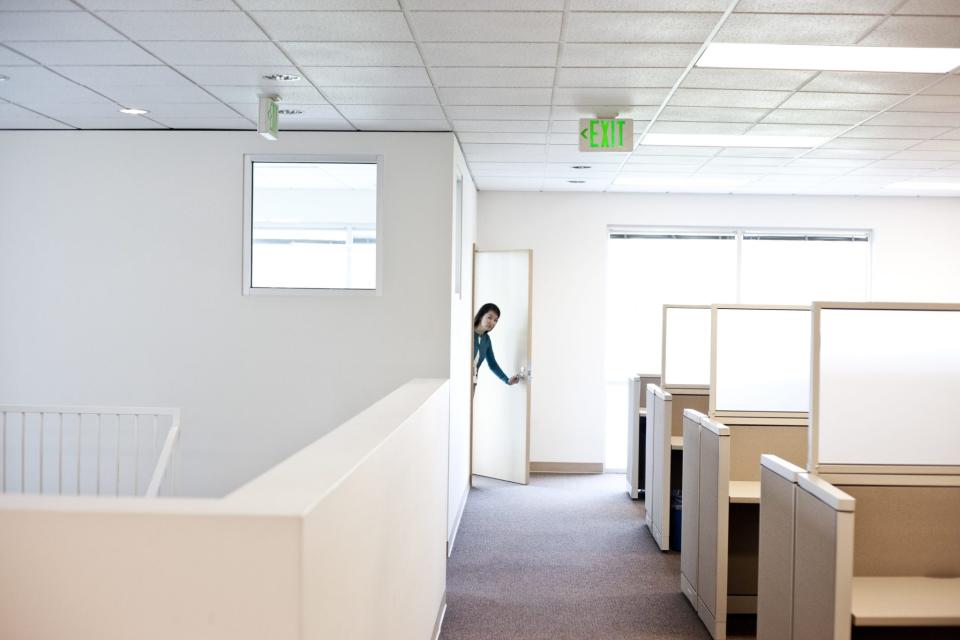Stanford economist says forcing people back to the office full time is a costly mistake: ‘They want to learn, they want to socialize—they just don’t want to go in five days a week’

The office debate is over: Work from home—in some capacity—is here to stay.
That’s according to the so-called “guru” of the matter, Stanford economist Nick Bloom. Bloom recently appeared on New York Magazine’s “Pivot” podcast, hosted by journalist Kara Swisher and NYU professor Scott Galloway, as part of a four-part series dedicated to the future of work.
Remote work, just one or two days a week, has won the battle, Bloom says, simply because it’s profitable for companies. “I mean, that is the bottom line,” Bloom told Swisher and Galloway. “We live in a capitalist economy.”
It’s profitable, firstly, because it has been proven it doesn’t impact performance, and actually greatly reduces employee turnover—which is a significantly more expensive phenomenon than giving existing employees annual raises.
In fact, it’s fully remote set-ups that are the most cost-effective because company leaders don’t have to pay for offices at all. Bloom, as ever, is quick to point out the inanity of the idea that everyone has to be in-person just because. “Imagine the back office staff typically in this setup—someone doing HR, payroll, or data entry. You'd have to pay for office space for them, but you can hire them nationally or globally,” he said. “So in both cases, it really is profitable for firms to go hybrid or fully remote.”
That doesn’t mean the win has been duly noted by every company. Roughly 60% of American workers—mostly essential-service employees in healthcare, retail, or manufacturing—are fully in-person. Another 30% are hybrid, and the remaining 10% are fully remote—mostly back-office workers, by Bloom’s count.
Bloom was challenged by Galloway, an avowed member of the pro-office cohort.
“My sense is, coming out of COVID, most everything's returned to normal except for this,” Galloway said. “It strikes me that there's just going to be an enormous transfer of trillions of dollars in value from commercial to residential real estate, and for people under the age of 30, I think it's a disaster.”
Galloway’s far from alone in his characterization of young workers logging on from home. Goldman Sachs CEO David Solomon called remote work an “aberration”; JPMorgan Chase CEO Jamie Dimon said he thinks remote work simply “doesn’t work” for entry-level workers or their bosses; and Elon Musk has insisted remote workers are just pretending to work.
“We don't like to talk about it, [but] relationships begin at work, and young people need socialization,” Galloway said, which those CEOs would likely agree with. “It’s really, really detrimental to the relationships and even the mental health of young people.”
Bloom rebutted, telling Galloway that a class of 50 Stanford undergrads recently revealed a stark divide in their desires. “Half of them want to work from home precisely zero days a week, because they want to be mentored, be social, and get out of their tiny apartments.”
Roughly a third of people want to be fully remote, Bloom added, but most people across generations and industries want to go into their workplace two or three days a week. “They want to learn, they want to socialize—they just don't want to go in five days a week,” he said. “That's where the grind ends up being.”
As a result, Bloom said, “winter has come for commercial real estate.” As fewer and fewer people head into their offices five days a week, most major metropolitan areas fall victim to the so-called “Donut Effect”: the hollowing out of cities and beefing up of suburbs. “The centers have gone soft, but the edges have done very well.”
It’s in companies’ best interest to figure out a sustainable hybrid plan that works, Bloom said, or they’ll be left firmly in the dust. As he’s said in the past, even if remote work rates plateau this year and next (as they have in the past two years), he expects a gradual, sustained uptake—a Nike swoosh—by 2026.
“It feels like the [score of the] last three years has been, Work from home—three; return to office—zero,” Bloom said last summer. “This is not a match that RTO is winning.”
This story was originally featured on Fortune.com
